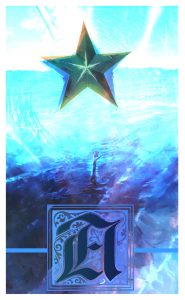At the dawn of the 14th Age, there came to be five religious Entities.
During the 14th Age it can be common for members of the same family to worship different Entities – the rigidity of the belief systems is loose compared to others. Also, people may gradually change their overall view on life and thusly, their Entity. This is uncommon though – but possible. Sometimes, a person will worship no Entity until a powerful event occurs and shapes their feelings.
Due to the above reasons, there have be virtually no religious wars in the 14th Age. In a way, religion during this Age is more about life ideals than a strict code of conduct. Having said that, religion does have a very public life and it does play a strong roll in the every day lives of the ordinary person.
The five Great Entities during the 14th Age are:
- Empathy – The Entity of love and care for others.
- Perseverance – The Entity that signifies the will to live and strive.
- Iniquity – The Entity that stands for death and evil.
- Apathy – This Entity is followed by amoral, self-serving agnostics.
- Obscurity – This Entity’s followers utilize the control of information for personal gain.
Each Entity has a religious network that spans most of the world. There is little physical presence of the Entities in Tralisia. The new settlers are responsible to construct their Entities presence.
Below is more information regarding these Entities.
Empathy
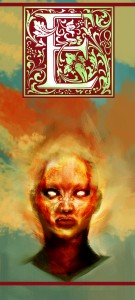 This Entity views all aspects of life through a lens of all-encompassing charity. A follower’s responsibility is to incorporate charity and kindness into every thought and action. This ideal may never be achieved, so the struggle inherent in every worshiper is to overcome his own real or perceived selfishness and to think of others.
This Entity views all aspects of life through a lens of all-encompassing charity. A follower’s responsibility is to incorporate charity and kindness into every thought and action. This ideal may never be achieved, so the struggle inherent in every worshiper is to overcome his own real or perceived selfishness and to think of others.
While followers of Empathy have a strong inner desire to help others they are neither naive or stubborn about it. They’re are able to, for the most part, look at a situation and best chose on how to act.
Empathy is thought to be a woman and is often times referred to as Her.
The colors of Empathy are green and red.
Characteristics
They are open minded and willing to listen to the troubles of the common folk.
The poor often flock to Priests of Empathy for their charity and kindness. It is not uncommon to see the homeless at their temples.
Conflicts
Empathy generally conflicts with followers of Iniquity and at times, Apathy. Rarely, Obscurity will offer a source of conflict but this depends more on the specific situation.
Prevalence
Empathy has a strong following in South Kel-sith. Though, their followers can be found anywhere n the rest of the world.
The Empathic Light is the Grand Temple of Empathy in the city of Ema. The Empathic Flame, the holy light which began burning upon Empathy’s first appearance in Eihydia at Ema burns at the center of the temple.
New holy temples can only be fully established when a flame from the Empathic Flame is carried to the new location and placed within after a rigorous holy ceremony. This is a major event and usually draws one of the Flame Bearers.
Across the world, there are both large and small temples of Empathy – they can be found in virtually every major city.
The Clergy
The responsibilities of every Empathy Cleric is to assist anyone in need – both rich and poor. They must always have an open mind, though they may be weary, for any requests of help. Someone in need will rarely be turned away.
During this ceremony, the Cleric will pray to Empathy about their soon to be committed selfless act.
Another responsibility a Cleric of Empathy must routinely perform are regular ceremonies for their population center. These ceremonies are to provide a way for the citizens to renew their faith and to receive help from the religious officials. It is a time where their fears and needs can be put forth and to hopefully be recognized.
Organizational Structure
The organizational structure of the Empathy is as follows:
At the Empathic Light there resides a council of 3 Flame Bearers – the most senior and well respected members of Empathy. These members provide guidance to the rest of the followers and offer deep insight into Empathy’s most scared beliefs.
The three Flame Bearers are:
Hosteller Kazarn, Male Human
Desurmra Di’nati, Female Cryinale
Fuion Diepht, Male Amphorian
Under the Flame Bearers is a series of High Priests. These High Priests represent the head of each temple in the world. Only the Flame Bearers can appoint a High Priest of a temple.
Besides the routine clergy that run the day to day operations of the church, a special sect called the Empath Circle exist. This sect are filled with pilgrims, who’s goal is to touch the lives as many people as possible. The members are usually nomadic in nature and are worldly. They deeply believe by positively affecting the inhabitants in the world, overtime, Empathy’s influence will grow. It is a truly selfless life and in a small way, fully embraces Empathy’s beliefs.
Perseverance
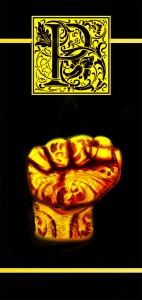 This Entity views all aspects of life through an all-encompassing lens of struggle. A follower’s responsibility is to incorporate dedication and strength of will into every thought and action. This ideal may never be achieved, so the struggle inherent in every worshiper is to overcome his own real or perceived slothfulness and to engage all of his mental and physical ability in some way.
This Entity views all aspects of life through an all-encompassing lens of struggle. A follower’s responsibility is to incorporate dedication and strength of will into every thought and action. This ideal may never be achieved, so the struggle inherent in every worshiper is to overcome his own real or perceived slothfulness and to engage all of his mental and physical ability in some way.
While followers of Perseverance view life as a struggle, they neither actively shy or look for conflict. Everyday followers simply look to the challenges life gives them as an opportunity to overcome and show their strength in faith. The most devout followers, generally Clerics but not always, do tend to look for specific situations.
Perseverance is thought to be neither man or woman. It is sometimes referred to as the Great Struggle, the Never Ending Walk, or similar sayings.
The colors of Perseverance are yellow and gold.
Characteristics
Conflict is common to all walks of life – from the poorest individuals to the most powerful ruling entire nations. Due to this, followers of Perseverance are readily in demand to assist these people. They can act as advisers both from a particular perspective and spiritual. Some Clerics specialize in various trades to lend their services to people or organizations who require it.
Regardless of the situation, the followers always look to the struggle and to overcome it. With their piety and their inner strength – they channel this to overcome any obstacle in their way. They rarely, if ever, succumb to psychological defeat. A ray of hope always burns brightly in their hearts.
Finally, well known followers have become exceptional orators and have a tendency to enter politics.
Conflicts
Perseverance generally has conflict with Iniquity. This is due to the common thought Iniquity creates suffering and conflict. This is up for debate.
Prevalence
Perseverance is not as common as Empathy, and has a smaller following on Evonia. Their current grand temple is in Vanyelar.
The Clergy
…providing verbal assistance in the form of motivating speeches…
Some Clerics have focused on providing verbal assistance in the form of motivating speeches, while others have looked to construct structures as symbols of undying faith. Other still, look to empower the populace themselves to spread the sense of perseverance.
Regardless of the path taken, the underlying message of never to give in and always to retain hope is strong.
Organizational Structure
A single Grand Priest acts as the head of the Church. They oversee the entire following of Clerics underneath them. They appoint and anoint High Priests to spread their faith to other continents. Unlike other faiths, a High Priest rules over a continent and not a single temple. Also, followers of the faith can create a new temple at any time – struggles can appear without warning. The High Priest simply needs to be notified.
The current Grand Priest is Jessal Lerria, Female Indago and the High Priests by continent are:
North Kel-sith – Jessal Lerria, Female Indago
South Kel-sith – Wenoysn Jiv, Male Amphorian
Evonia – Daria Kirsh, Female Disorain
Lon’gordia – Ponuck Steelwill, Male Dwarf
Ama’rane – None
Ravinder – All followers of Perseverance
Every year, the High Priests meet at Vanyelar for the Council of Will. This meeting lasts for 4 weeks and all matters of faith and struggle are discussed. Each new year brings new struggles and the stories of perseverance over the previous year can be used as motivation and strength to overcome the upcoming ones.
One interesting note is Perseverance appeared simultaneously to the four founders at roughly the same time at the dawn of the 14th Age over 300 years ago. It was not until several years later did they all meet at Vanyelar and formed the Council and the current church structure.
Iniquity
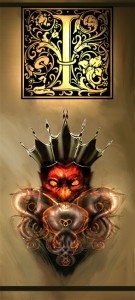 This Entity views all aspects of life through an all-encompassing lens of sin and injustice. A follower’s responsibility is to incorporate cruelty and malice into every thought and action. This ideal may never be achieved, so the struggle inherent in every worshiper is to overcome his own real or perceived kindness and to behave sadistically.
This Entity views all aspects of life through an all-encompassing lens of sin and injustice. A follower’s responsibility is to incorporate cruelty and malice into every thought and action. This ideal may never be achieved, so the struggle inherent in every worshiper is to overcome his own real or perceived kindness and to behave sadistically.
While Iniquity has a strong interest in death and acts considered to be evil, that does not necessarily mean all their followers are evil or obsessed with death. They may simply embrace their own death, or death in general. Though, many of the followers find power and strength in harnessing these more forbidden emotions and desires. It does not make them inherently bad.
Iniquity is thought to be a man and is often times referred to as Him or the Dark Lord.
The colors of Iniquity are black and red.
Characteristics
The every day follower of Iniquity may simply have a slight interest in death or sin.
Deep down, Iniquity followers can have an interest in death, the dying, or the medical arts. Others may have more sadistic views or personalities. But this is clearly not a requirement. The every day follower of Iniquity may simply have a slight interest in death or sin.
Conflicts
Iniquity conflicts mostly with Empathy and at times with followers of Perseverance. Iniquity will readily work with followers of Obscurity and Apathy.
Prevalence
Iniquity is prevalent in all areas of the world – death is never far away from the inhabitants of Eihydia. Major cities generally have a following of Iniquity Clerics to collect the death, to perform the death rites and burials.
The main temple of Iniquity resides in the city of Dark Raven on North Kel-sith.
The Clergy
These rituals are a closely guarded secret.
These rituals are a closely guarded secret.
Some Clerics serve others as a conduit to sin and other devious thoughts. Much like the rituals, these acts are closely guarded.
As can be guessed, the secrets of Iniquity run deep and the utmost responsibility to ensure they are kept that way.
Organizational Structure
A series of religious books were written upon the first appearance of Iniquity. These are known as the Books of Iniquity.
The introduction in each book follows with the passage:
Where there is light, there are shadows.
For there to be good, there must be bad.
For love to exist, hate must also.
Joy and pain; happiness and sorrow.
This duplicity exists within every soul.
In every soul, both light and darkness dwell.
In every soul, I am there, for I am that darkness.
The faith of Iniquity is divided up between the Sins and High Priests rule over a congregation of each. The current High Priests and Sins are:
Haldrap – High Priest of Death
Qualhor – High Priest of Pain
Calia – High Priestess of War
Yawmilt – High Priest of Greed
Mirradid – High Priestess of Hate
Socral – High Priest of Envy
Rint – High Priest of Lust
Maladin – High Priest of Deception
Solodrich – High Priest of Wrath
The real identities of the High Priest are concealed from the public eye. Each High Priest actively recruits followers into their organization and work to further their cause. Each sect has unique rituals that are required for membership. Finally, some sects are more public than others.
While the structure appears segmented, it is strongly bound and the High Priests regularly meet and put forth decrees and paths for the faith. The main temple of Iniquity resides in the city of Dark Raven on North Kel-sith.
Apathy
…followers of Apathy often demonstrate sociopathic behavior.
It is unknown what Apathy is like. Its form is simply not important to Apathy followers.
The colors of Apathy are blue and crimson.
Characteristics
Due to their selfish natures, followers of Apathy are generally unable to form meaningful relationships; they often display antisocial behavior and are inconsiderate, manipulative and lack total regard for the safety and feelings of others.
Conflicts
Followers of Apathy will only work with other religions when there is a benefit in doing-so.
Prevalence
Apathy and Obscurity are the Entities with the least amount of followers.
There is no main temple of Apathy in Eihydia.
The Clergy
Clerics of Apathy are motivated by money and power. They will only guide their followers when personal gain is a possibility. Followers often receive monetary compensation for their service to local Clerics.
Organizational Structure
There is no overarching organizational structure for Apathy followers.
Obscurity
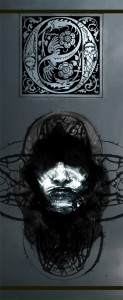 Followers of Obscurity are known for collecting and controlling the flow of information; what users do with this intelligence is entirely up to them. The devoted are the keepers of all secrets; they truly believe that knowledge is real power.
Followers of Obscurity are known for collecting and controlling the flow of information; what users do with this intelligence is entirely up to them. The devoted are the keepers of all secrets; they truly believe that knowledge is real power.
The colors of Obscurity are gray and black.
Characteristics
Followers of Obscurity believe in the orderly gathering and control of information. Generally, this information is used to aid allies and causes, or it is used to harm and manipulate enemies. It is rumored that Obscurity reveals its own, ultimate secret to the truly devoted.
Conflicts
The church keeps a low profile and is, on its own, non-threatening; the actions of the followers do not reflect the position of the church.
Prevalence
Obscurity, like Apathy, has a small devotion of followers; they are found all throughout the known world.
The Clergy
The Cleric’s responsibility is to empower their followers with secrets and information. Ultimately, their goal should be to motivate change that benefits and supports the ideals of their sect.
Organizational Structure
Each sect has its own individual rituals and ceremonies.
The main temple, located in the city of Vilainburgh, is mostly a public forum designed to educate and convert new followers.
Each sect has its own individual rituals and ceremonies.

